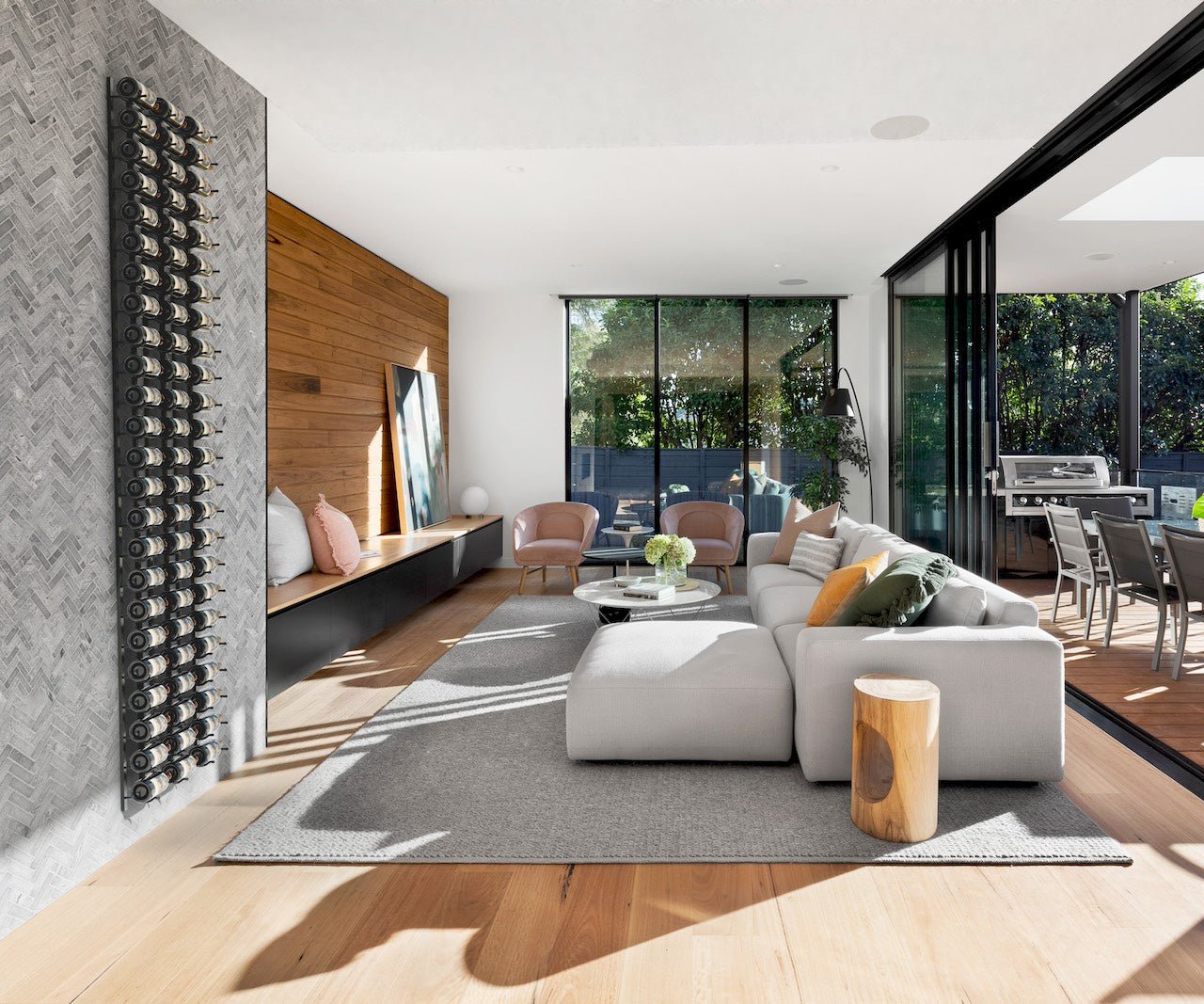Designing a wine cellar isn’t all about where your wine will go. Everything that makes up the space, inside and outside, needs to be considered. A carefully laid out design needs to start at the foundation, almost literally. While there are many ways to make a wine cellar great, the quality of construction and the materials we use are crucial.
We frequently discuss insulation needs and maintain a tight, efficient envelope with our clients and their builders. When you use the proper materials for vapor barriers and insulation, the temperature and humidity in the wine cellar will be easier to control, giving us the perfect environment for storing wine.
With all that said, let’s get into it. What do you need to know for vapor barriers? What do you need to know for insulation?
Vapor Barriers
Simply put, we recommend vapor barriers for all our wine storage solutions. It separates your wine cellar from everything else outside of the barrier and helps to protect your collection. We're mostly talking about humidity when it comes to vapor barriers.
A real issue in wine cellars with poor climate control is condensation. Trying to cool a wine cellar when the rest of the home is warm, if not separated, will cause condensation to form inside the wine room – mold and the deterioration of wine labels are generally the primary concerns.
Over a long period, it could affect the room's integrity. It is just plain inefficient. In short, vapor barriers will:
-
prevent moist air from entering the wine cellar in warm, humid climates
-
help maintain the level of humidity within the wine cellar in cool, dry climates
-
need to be 6mil poly vapor barrier wrapped around walls and ceiling if fibreglass batts of rigid foam are used
Here’s a pro tip: Polyurethane (closed-cell foam) is the best option! It acts as both a vapor barrier and insulation.
Insulation
Our vapor barrier will control the humidity levels, and it will need proper insulation to control temperature. Temperature fluctuations can cause the wine to spoil and age prematurely.
Wine cellars need proper insulation to maintain the appropriate temperature for storing wine. The appropriate insulation will stop your wine cellar from becoming too hot and improve the cooling system's efficiency.
If you opt-out of the Polyurethane spray, your next best option is fibreglass batts between studs.
Walls – R-22 fibreglass insulation between the studs
Ceiling – R-32 fibreglass insulation between ceiling joists
Floors – install rigid fibreglass insulation between sleeper flooring “studs”
Many homes are using in-floor heating, and if this is the case in your wine cellar, you'll need to create separation. If the floor is very cold, you will still need insulation to create separation.
Modern Wine Cellars typically incorporate custom glass for storing and displaying wine, but it needs to be done right. If you have questions about your wine cellar project, please don't hesitate to get in touch with us today!


